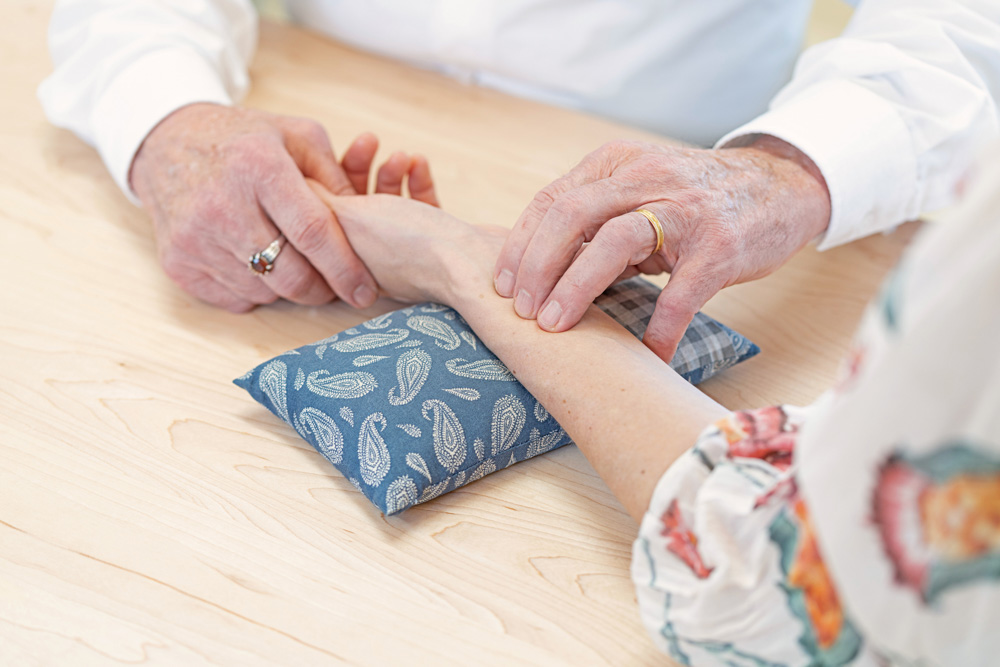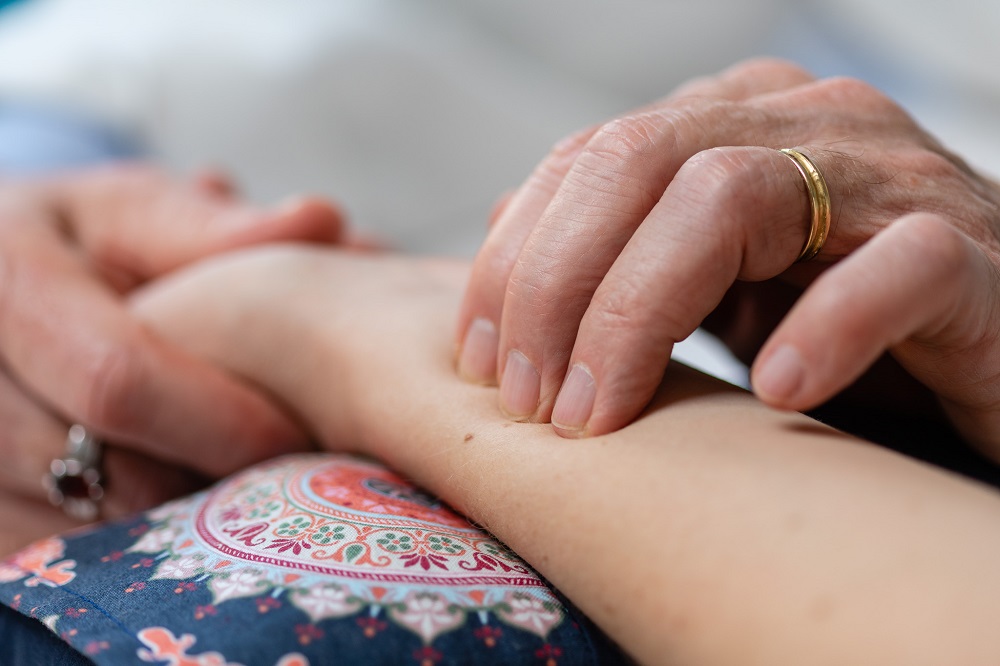
Pulse diagnosis in Ayurveda – the key to individual health
In Ayurveda, diagnostics play a central role in understanding and specifically promoting the balance of body, mind and soul. When you come to our practice for the first time, we will first take your details and ask you to complete a short medical history form. Every first appointment in our practice begins with an Ayurvedic pulse diagnosis. We will then discuss your concerns, wishes, complaints and goals in detail.
One of the oldest and most precise methods is pulse diagnosis (Nadi Vigyan). It enables the experienced Ayurvedic doctor to recognize which
What is pulse diagnosis in Ayurveda?
Pulse diagnosis in Ayurveda is based on the assumption that the pulse reflects the physical, mental and energetic state of a person. By carefully palpating the pulse with three fingers, the doctor can determine:
- Which Dosha – Vata, Pitta or Kapha – dominates
- Whether a dosha is out of balance
- Which subdoshas (sub-functions) could be disturbed, e.g. Prana Vata (nervous system) or Ranjaka Pitta (liver function)
Each dosha controls different bodily functions, and an imbalance can lead to physical complaints or psychological tension.
How does pulse diagnosis work?
During pulse diagnosis, the Ayurvedic doctor feels various parameters such as pulse rate, pulse strength and pulse rhythm: Pulse rate, pulse strength and pulse rhythm.
By precisely analyzing these characteristics, weak points in the body can be identified. On this basis, the doctor decides which forms of therapy and Ayurvedic measures are best suited to restoring balance.

The importance of personalization in Maharishi Ayurveda
In Maharishi Ayurveda, pulse diagnosis serves as the key to individualized therapy. Each treatment is tailored to the patient’s unique constitution and current needs.
The results of the pulse diagnosis determine whether a patient should receive warming, cooling, nourishing or reducing treatment. Possible therapeutic approaches include
- Ayurvedic phytotherapy (medicinal plants)
- Individual nutritional advice, adapted to doshas and constitution
- Marma and oil massages to release blockages
- Adjustments to the daily routine and biorhythm
These targeted measures promote physical balance, mental clarity and inner well-being.
Conclusion: pulse diagnosis as the basis for health and well-being
Pulse diagnosis is a precise and profound tool in Ayurveda. It enables a holistic view of the person, uncovers imbalances and provides the basis for personalized therapies.
Through pulse diagnosis, Ayurveda can help to promote longevity, vitality and inner balance – central goals of this traditional art of healing.
Nein, die Pulsdiagnose ist schmerzfrei. Der Arzt/Ärztin legt nur leicht die Finger auf das Handgelenk, um den Puls zu fühlen.
Eine vollständige Pulsdiagnose dauert in der Regel 10–20 Minuten, je nach Komplexität und weiteren Untersuchungen wie Zungen- oder Augendiagnose und wie geübt der Arzt/Ärztin ist.
Bei erfahrenen Ayurveda-Ärzten gilt die Pulsdiagnose als sehr präzise, besonders in Kombination mit anderen diagnostischen Methoden wie Zunge, Augen, Haut und Anamnese.
Ja, sie ist jeden geeignet. Auch bei Kindern/Babies kann man bereits den Puls fühlen und erkennen was die momentane Konstitution widerspiegelt.
Appointments at the practice are best arranged online or by e-mail at
.
Our new telephone hours are
Mon. until Thu. 1 to 2 p.m., Fri. from 8 to 9 o’clock
+43 7732 455 76-20 | praxis@somamed.at
